#vegavis
Text
Fossil Novembirb: Day 1 - The Chosen Ones
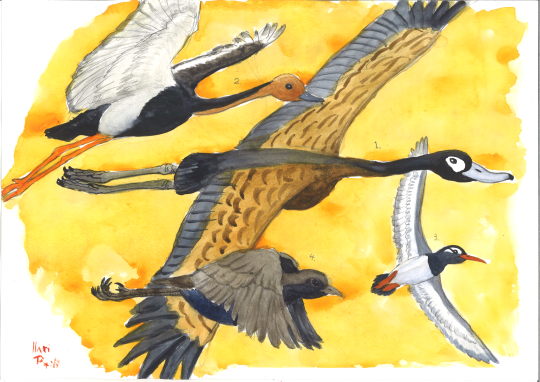
All the dinosaurs died out at the end of the Cretaceous during the K/Pg extinction event 66 million years ago. All of them? No! One group of dinosaurs managed to survive the event and are still around today. Neornithes, or Crown birds. They evolved during the end of the Cretaceous period, and by coincidence, had traits tohelp them survive the cataclysm. Here's a few of these early feathered friends.
Teviornis, a large wading Presbyornithid (flamingo-duck) from Mongolia
"Styginetta", a smaller Presbyornithid (flamingo duck) known from Western North America
Vegavis, a strange, small diving seabird related to ducks and geese, known from Antarctica
Asteriornis, sometimes called the "wonder-chicken", a tiny long legged shorebird related to the common ancestors of ducks and chickens, known from Belgium
#Fossil Novembirb#Novembird#Dinovember#birblr#palaeoblr#birds#dinosaurs#Cenozoic Birds#teviornis#styginetta#vegavis#asteriornis
206 notes
·
View notes
Text
FOSSIL NOVEMBIRB - DAY 1
Am I participating in 2 different paleo november challenged? Yes, yes I am. But we start with the Fossil Novembirb with a cute Vegavis!

As always, you can get all these cute stuff in my redbubble
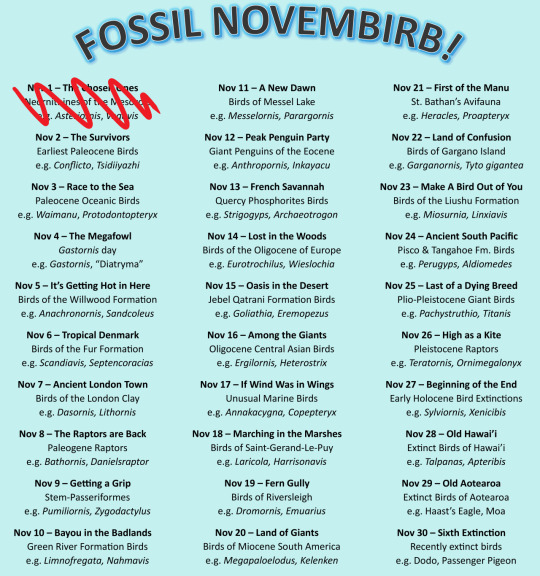
51 notes
·
View notes
Text
Vegavis
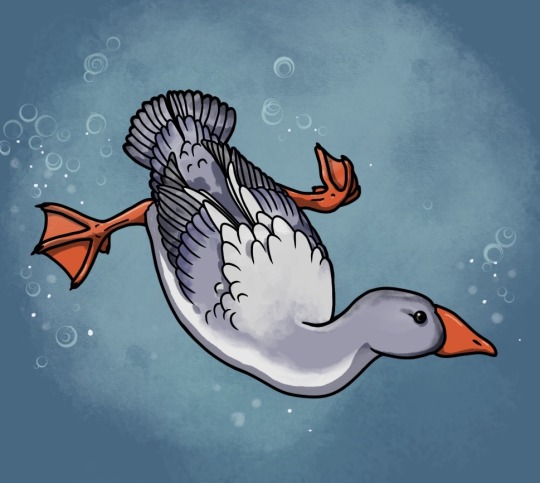
I’ve spent way to many hours researching this bird now, and still know way too little, but here’s my take on Vegavis. With feet propelled swimming and high metabolism I’m doubtful of them mainly predating on fish. I’ve instead gone with a bird living in more shallow waters of cold climate with a beak akin to an eider for eating mollusks and maybe crustaceans or other bottom-fauna.
I love feet-propelled divers across the board, and I really hope I get to learn more about this birb and it’s habit in the future!
Sources and stuff under the cut.
The main sources to guide me were theese two papers:
- ”New data on the Vegavis iaai holotype from the Maastrichtian of Antarctica” 2021. Carolina Acosta Hospitaleche and Trevor H. Worthy. Cretaceous Research.
-”Bone microstructure of Vegavis iaai (Aves, Anseriformes) from the Upper Cretaceous of Vega Island, Antarctic Peninsula” 2017. Jordi Alexis Garcia Marsà, Federico L. Agnolín & Fernando Novas. Historical biology.
I also looked at the paleoart made for the 2021 article as well as a piece made by Gabriel L. Lio for the Museo de Ciencias Naturales in Bernardino Rivadavia, Argentina.
For the anatomy in my piece I’ve also looked at extant birds: mainly at eiders, since they’re the right size and climate, but also other diving ducks as well as mergansers and loons for the feet swimming.
49 notes
·
View notes
Text
Thinking about how ducks and geese look and sound almost exactly the same as they did over 65 million years ago:
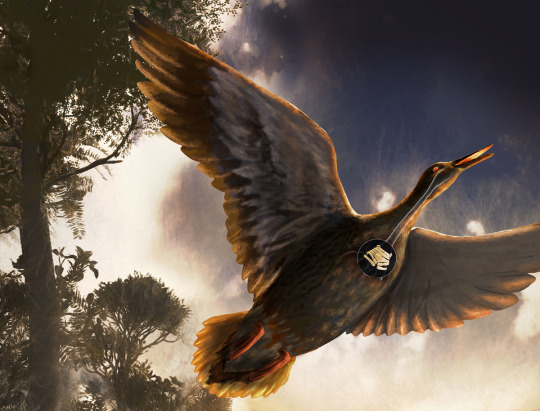
(Art above by artist Nicole Fuller)
This is Vegavis, the oldest known bird of the class Anseriformes. If it looks familiar, that's because it is literally a duck. Vegavis was closely related to modern ducks and geese, with preservation of the sirynx implying it quacked like a duck. Vegavus lived in antarctica around 68-66 million years ago placing it firmly in the late cretaceous period. The diving waterfowl we throw bread at have been doing duck things almost unchanged since before the rest of the dinosaurs went extinct.
Since common knowledge is that birds are derived dinosaurs, the best way to get the true cretaceous dinosaur experience is not to watch Jurassic Park but rather to piss off a goose.
The ultimate lifeform underwater might be a crab, but the king of the air is a duck and you should be scared.
#piss off your local goose today#or a territorial duck#im not picky#paleontology#birds#ducks#anseriformes#vegavis iaai#vegavis#dinosaurs#zoology#goose#geese#swans too
19 notes
·
View notes
Note
Trick or treat! but I gift you my 2 attempts at making dino sounds (bass sensitive headphones recommended).
Oooooooh I love these
@raptorcivilization

For you: Vegavis!
46 notes
·
View notes
Text

some kind of duck for @a-dinosaur-a-day 's fossil novembirb challenge
36 notes
·
View notes
Text
Day One of Fossil Novembirb
Vegavis
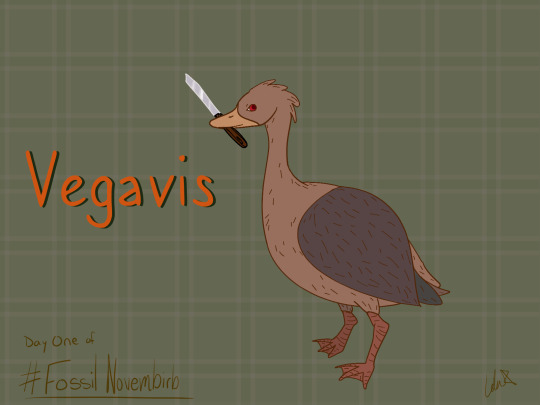
They strike me as a prehistoric goose
#fossil novembirb#vegavis#bird#paleoart#goofy art#my art#digital art#clip studio paint ex#digital drawing
39 notes
·
View notes
Text
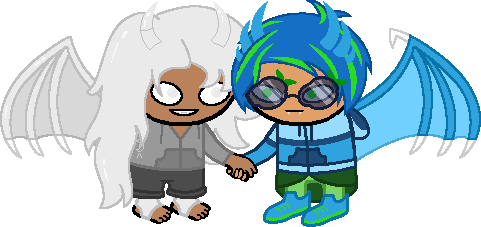
She/Her non-binary 🤝 He/Him non-binary
Made using @lepiosprites's hand holding base
#vegavis yama#blueberry doe#galactics#fanspecies#my sprites#| Lepio's hand holding base is very good and easy to use you should consider buying it if you need one
12 notes
·
View notes
Text
every day i log on and am asked so many questions im not qualified for
#i dont know what a vegavis is#i forgot about all asioaf characters im so sorryyyy#*breaks down sobbing*
2 notes
·
View notes
Text
Among other things I’ve done in my inactivity on the Tumbles, I did some storyboard stuff with friends.
As much as I love Prehistoric Planet (And I do, it’s incredible, like easily in my top tier palaeodocs of all time), me and some of my friends thought that it was missing something. Something... avian.
So, I made some storyboards depicting “Deleted scenes” of Prehistoric Planet, featuring some End-Cretaceous Mesozoic birds.
The boards were drawn by yours truly and were masterfully edited by my good friend @shadows-and-science-gone-mad
I also provided a David Attenborough impression.
Not necessarily the best one, though
Here’s a link to the video, hope you enjoy it!
https://www.youtube.com/watch?v=2dwGlbrMRDQ
#palaeoblr#prehistoric planet#paleoart#storyboards#Asteriornis#pterosaur#Enantiornithid#vegavis#Hesperornis#dinosaurs#This was a flippin blast to make#And again a massive thanks to the editor
114 notes
·
View notes
Text
Fossil Novembirb, the first nine days
Hello World. I never thought I'd be on this site, but here I am. This blog was created for the purpose of participating in a-dinosaur-a-day's Fossil Novembirb. Fossil Novembirb is a yearly art event founded by Meig Dickson, a vertebrate palaeontologist who, as far as I can tell, studies dinosaurs, especially theropods. Don't fight me or em over birds being theropod dinosaurs. Neither ey nor I want to have this conversation, so enjoy the art!
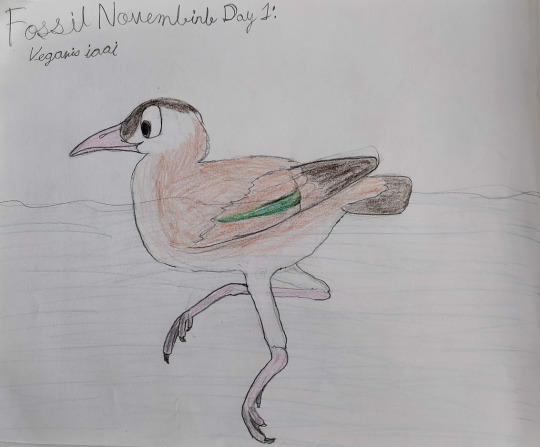
I started off my Fossil Novembirb with Vegavis iaai. What makes this fluffy anseriform special is that we found a fossilised syrinx (avian voice-maker) belonging to one of these, so we can reconstruct their sounds. This Vegavis was coloured based on a bunch of anseriforms that are alive today, like ruddy shelducks and cotton pygmy geese.

For Day 2, I did a bit of spec evo and pulled out a scientific name I told myself I'd assign to a newly-discovered fossil genus. This sketch has a Serina-like text description for Phantasmavis.

Tropicbirds! I chose to draw Clymenoptilon because I was hoping "tropicbird" meant "brightly coloured bird". Even though they aren't that brightly coloured, they're still cool. And Kumimanu (approximately to scale in this drawing) didn't really have the obligation to be black-and-white like most extant penguins (because Inkayacu), so I went... mild-wild with the colours.
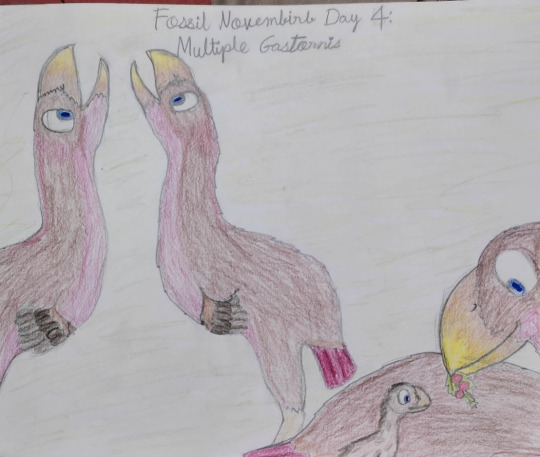
No... one's... tall like Gastornis, no one calls like Gastornis! In the bottom right, no one feeds small like Gastornis!
I've seen the "Andy's Prehistoric Adventures" episode featuring these megafowl, realised it was Walking With Dinosaurs with a human inserted, and drawn a mildly speculative colouration for these Gastornis. To the left, two adults have their necks out towards each other and are calling into the sky. Whether this is courtship or a challenge, nobody knows. But a calmer scene happens in the bottom right, where a mother shows her chick red berries on a branch to show them that it is food.
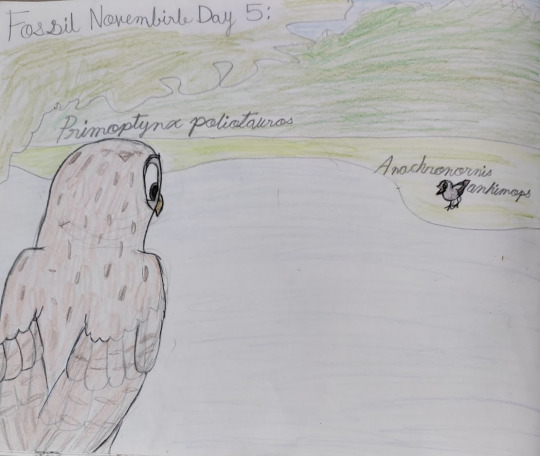
"Don't make me fly up there, you punk!" is one way to interpret the screamerduck Anachronornis' call in the direction of the Primoptynx owl. This scene unfolds in the Palaeocene-Eocene Thermal Maximum ecosystem of the Willwood Formation before it was rock.
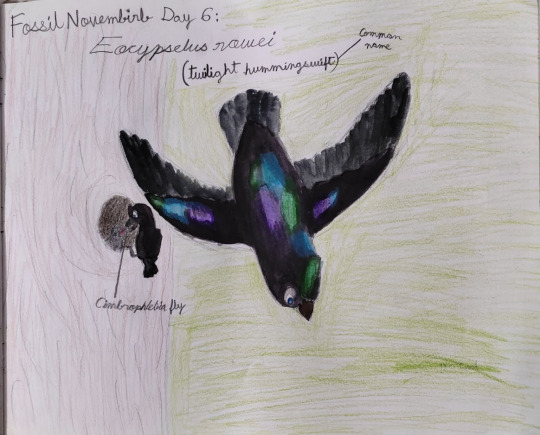
It's a twilight hummingswift! We know the colour of this iridescent little birb from the Danish Fur Formation. I watched a tutorial on painting iridescence, but I'm not really satisfied with the parent feeding their chick to the left of the flying Eocypselus rowei. It's hard to see, but there's a baby hummingswift being fed a Cimbrophlebia scorpionfly.
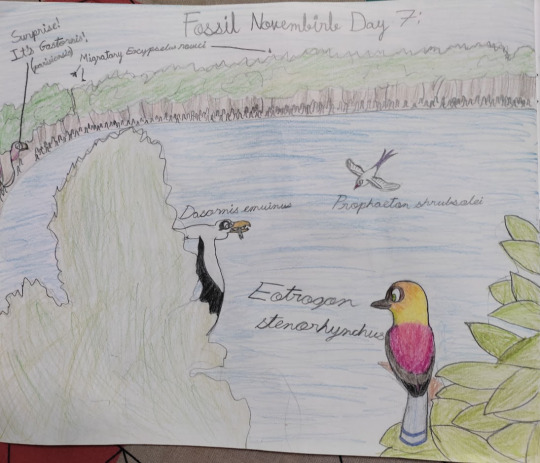
London Clay has a lot of plant fossils. Not all of them are listed on Wikipedia, but there's a photo of a pencil-root mangrove seed listed. Featuring a speculatively-coloured Eotrogon, a Dasornis carrying away a mackerel, and a Prophaeton just gliding, and repeat telecasts Gastornis parisiensis and Eocypelus rowei, Eocene London was a birder's dream (believe me, I'm a kinda-birder).
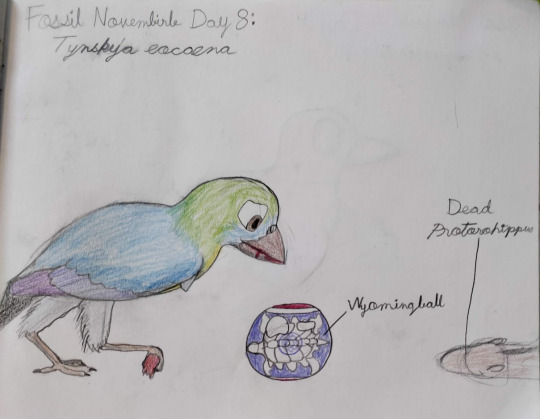
This Tynskya art was somewhat late, rather dissatisfactory, and mildly rushed. I had an exam the next day. Don't judge me.
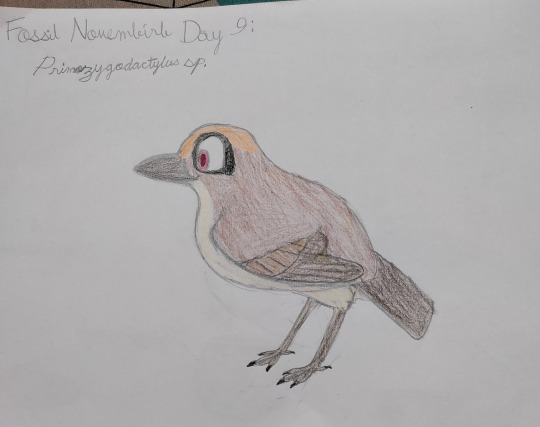
And here's a better Primozygodactylus! I couldn't tell the specific species because it wasn't listed for the Wikipedia image. But here we are: a bird that gives off ashy prinia/sparrow/orange-headed thrush vibes.
This concludes the first nine days! I don't know if I'll be doing the tenth because nobody's giving me straight answers about the palaeobotany of the Green River formation.
Enjoy!
#fossil novembirb#dinosaur#birds#paleoart#this site is as chaotic as it seemed when I first anonymously browsed eir blog#paleogene#palaeogene#eocene#cenozoic#maastrichtian
14 notes
·
View notes
Note
HEHEHE HIII, what are YOUR favourite dinosaurs/prehistoric species!!
OOOOOOOHHH BAPY ITS TIME. Thanks for asking!!!! I could literally talk about dinosaurs and palaeontology for days without stopping if you’d let me. You have opened Pandora’s box and it ain’t shutting.
Sosososo I’ve always been a fan of the sauropods, and Brachiosaurus was my first favourite dinosaur, but it was pretty quickly overtaken by Sauroposeidon!! This behemoth from middle Cretaceous USA has often been restored as a pumped-up Brachiosaurus due to its incomplete nature, leading to height estimates of up to 18m tall!!!! MAKING IT THE TALLEST ANIMAL TO EVER EXIST!!!!!! That’s pretty sick in my opinion, though more recent estimates have shaved it down to a still impressive 15m after considering its place on the sauropod evolutionary tree, closer to the titanosaurs than Brachiosaurus is. Sorry I couldn’t help but say my piece about Sauroposeidon while I had the opportunity. It’s still my favourite dinosaur, though the mysterious Bruhathkayosaurus did hold the title for a little while when I was like 8? 9? And I sometimes consider Dreadnoughtus to be joint favourite thanks to a combination of Prehistoric Planet and some talks that I listened to by its discoverer, Kenneth Lacovara.
OTHER FAVOURITE (non avilaean) DINOSAURS INCLUDE, in no particular order:
SAUROPODOMORPHS
Dreadnoughtus, as I mentioned
Unaysaurus
Argentinosaurus
Apatosaurus, PALAEOACCURATE ONLY
Mamenchisaurus
Liaoningtitan
Brachiosaurus
Dzharatitanis
THEROPODS
Dakotaraptor, thanks to Saurian
Latenivenatrix
Zhenyuanlong, thanks to Steve Brusatte
Therizinosaurus
Anzu, again, Saurian
Khaan
Yutyrannus, particularly when restored with the headcrest
Juratyrant
Gorgosaurus
Metriacanthosaurus
Saurophaganax, mainly because it has a kickass name
Carcharodontosaurus
Neovenator, obviously
Eustreptospondylus
Baryonyx
Oxalaia, which is really fun to say
Masiakasaurus
Dracovenator, like Dilophosaurus but more obscure. And from South Africa.
Coelophysis
ORNITHISCHIANS
Triceratops
Turanoceratops
Protoceratops, thanks to Dinosaur Planet
Stegoceras
Aralosaurus
Edmontosaurus, particularly E.annetens
Saurolophus
Charonosaurus, like Parasaurolophus but more obscure. And from China.
Maiasaura, because in BestInSlot hated it in Jurassic World Evolution so it reflexively became one of my favourites out of spite/pity. It’s also cool in its own right don’t get me wrong.
Orodromeus. Hee hee. She dig
Lurdusaurus. I actually think it was Beasts of Bermuda that sold me on this one
Altirhinus. The schnoz on this man
Iguanodon
Rhabdodon
Dryosaurus
Heterodontosaurus
Scelidosaurus, particularly after seeing Prehistoric Kingdom’s rendering of it
Jakapil, newly discovered and straight on the list babey
Stegosaurus
Tuojiangosaurus. Spikey
Sauropelta
Borealopelta. WE KNOW WHAT COLOUR IT WAS!!!!
Ankylosaurus
Saiachania. Yes it is because of Dinosaur King.
Crichtonsaurus
Ok I lied there was an order. I sorted them by taxonomic Order. Also sorry there was so many I kept thinking of more. That was 52 I total??? 53 if you include Sauroposeidon. I just couldn’t decide.
BUT WAIT THERE’S MORE!!!!!
Particularly as of recent, I’ve become really interested in non-dinosaurs, particularly the megafauna of Cenozoic South America. Though I do have a side blog dedicated to lomg whale Basilosaurus, it’s tying with the terror bird Devincenzia for the top spot I think.
OTHER FAVOURITES INCLUDE:
BIRDS
Kelenken, another terror bird
Gastornis, thought to be terror bird-esque up until recently when it was revealed to be a fruit eater
Dinornis, the Moa
Hieriaaetus, Haast’s Eagle
Confusciousornis
Anchiornis, if you consider it a bird
Vegavis
MAMMALS
Megatherium, the largest of the giant ground sloths
Doedicurus
Panochtus
Macrauchenia
Toxodon, which probably lived like a hippo
Thylacosmilus
Hyaenodon, in all its many species
Enteldon, my favourite of the Entelodonts
Embolotherium, the best looking brontothere imo
Chalicotherium
Ancylotherium. I would say thanks to walking with beasts but I think that applies to too many animals here.
Deinotherium
Platybelodon, which I stumbled across in an old encyclopaedia with a friend and had a good laugh at
Coelodonta
Paraceratherium
Leptictidium. The schnoz on this man.
NON-DINOSAURIAN ARCHOSAURS
Hatzegopteryx. WHADDA GAL AMIRITE?
Barbaridactus, thanks to Prehistoric Planet
Tupandactylus
Tropeognathus, thanks to Walking With Dinosaurs, even if they do call it Ornithocheirus.
Thalassodromeus
Istiodactylus
Germanodactylus
Archosaurus. The schnoz on this man
Silesaurus, which is NOT a dinosaur
Desmatosuchus
Saurosuchus, a big land croc
Redondasaurus, one of the largest Phytosaura
Erythrosuchus, with its huge stupid head
Areripesuchus
Dakosaurus, a sea croc
Plesiosuchus, one of the largest sea crocs
Purussaurus
Barinasuchus
Quinkana, the last of the land crocs
NON-ARCHOSAURIAN SAUROPSIDS
Varanus priscus, aka Megalania
Mosasaurus
Tylosaurus
Thalassotitan, also because it has a kickass name
Platecarpus
Pliosaurus, particularly P. rossicus
Kimmerosaurus
Rhomaleosaurus
Tuarangisaurus
Nothosaurus
Temnodontosaurus
Opthalmosaurus
Tanystropheus. NECK
Longisquama
Coelurosauravus. It’s a liddle flying lizard!
Scutosaurus. Chonky dude
NON-MAMMALIAN SYNAPSIDS
Inostrancevia, thanks to Primeval
Lycaenops
Diictodon
Placerias
Lystrosaurus, the survivor
Estemmenosuchus
Tapinocephalus, a barrel of a beast
Edaphosaurus
Dimetrodon
Ophiacodon
NON-AMNIOTE CHORDATES
Koolasuchus, the last of the giant amphibians
Metoposaurus
Prionosuchus
Anthracosaurus
Hynerpeton, thanks to Walking With Monsters
Macnamaraspis
Xiphactinus
Thrissops
Cladoselache, a shark relative
OTHER
Arthropleura
Pulmonoscorpius
Pterygotus
Lyrarapax
Opabinia. IT HAS 5 EYES!!!!
Perisphinctes, a Jurassic ammonite
Belemnotheutis, a Jurassic belemnite
Paradoxoides, a Cambrian trilobite
Ok that’s finally everything. APART FROM THE PLANTS no I’m joking. You see what I said about days? Yeah.
Thank you again for the ask! I hope this wasn’t to much :3
7 notes
·
View notes
Photo

vega vi - Afternoon Daze - Neues Video vega vi aus Berlin hat letzte Woche das Video zu ihrer ersten Single “Afternoon Daze” veröffentlicht. View this post on Instagram A post shared by vega vi (@vega.vimusic) “Afternoon Daze” ist die Debütsingle von vega vi und im Juli diesen Jahres erschienen. Der Track hatte bereits Airplay bei Radio Fritz und wurde dort als “Senkrechtstart” […] #VegaVi https://www.musikblog.de/2022/10/vega-vi-afternoon-daze-neues-video/
1 note
·
View note
Text
ITS ALMOST FOSSIL NOVEMBIRB!!!!!
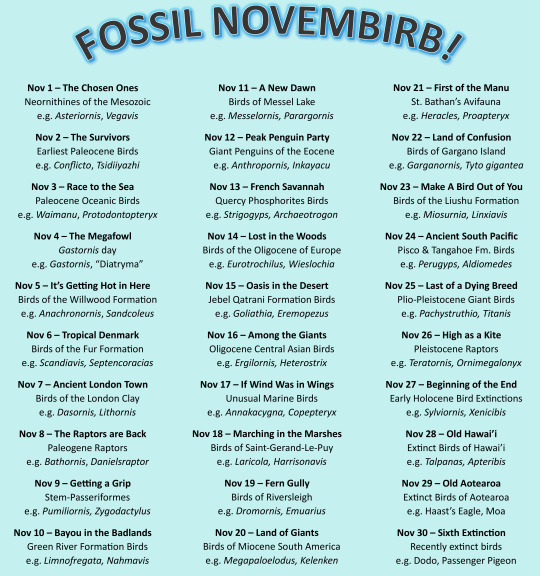
We're going to have a CELEBRATION of FOSSIL NEORNITHINES for this November!!! The extinct members of the only group of dinosaurs we have today!
Each day will have a prompt inspired by the evolution of crown-birds and the amazing forms they have taken over the past 68 million years!
You can respond to each day's prompt however you wish - with drawing and painting, writing, sculpting, music, videos, whatever! Just tag it "#Fossil Novembirb" for me to find it, and it'll get reblogged!
I'm so excited to see the art you guys create!
NOVEMBER 1 - THE CHOSEN ONES
Crown-Birds (Neornithes) known from the Mesozoic Era!
Options include Asteriornis, Teviornis, Vegavis, and "Styginetta"!
These are the only dinosaurs that survived the asteroid!
Theoretically there were also early Palaeognaths and Neoavians - if you want to do some spec evo and hypothesize what you think they might have looked like, go ahead! Follow your dreams!
NOVEMBER 2 - THE SURVIVORS
The earliest birds known after the K-Pg boundary!
Options include Conflicto, Tsidiiyazhi, Australornis, Qinornis, and Qianshanornis!
Birds diverged rapidly after the extinction, so also feel free to dive into spec evo into some of the forms we don't have fossils of!
NOVEMBER 3 - RACE TO THE SEA
The first Marine Neornithines and how they evolved in the early Paleocene!
Includes tons of early penguins like Waimanu, Kumimanu, Sequiwaimanu, Muriwaimanu, and Kupoupou
Also includes the first Pseudo-toothed bird, Protodontopteryx, and the earliest known Tropicbird, Clymenoptilon!
RISE OF THE PENGUINS!
NOVEMBER 4 - THE MEGAFOWL
Gastornis (aka "Diatryma", aka "Zhongyuanus") appeared in the mid-Paleocene and was a feature of the Cenozoic landscape until the end of the Eocene - so we have a whole day JUST FOR IT
Show your love for the Megafowl Gastornis! This giant herbivorous bird was fascinating, and has captured imaginations for decades because of it!
Gastornis is also present in many of the ecosystems described below, such as Willwood, Green River, and Messel, so we also just wanted to make sure people didn't keep picking Gastornis over and over again xD
NOVEMBER 5 - IT'S GETTING HOT IN HERE
The Paleocene-Eocene Thermal Maximum was the most dramatic incident of rapid global warming in the world since the Permian... until today!
It majorly affected the evolution of many things, possibly including birds!
The Willwood Formation straddles the time period of the warming, and has tons of birds that were evolving during that time period! So, for this day, create things involving birds of the Willwood Formation!
Options include the flighted Palaeognaths Lithornis promiscuus and Lithornis plebius; the possible stem-Ostrich Paragrus, the early half-screamer-half-duck Anachronornis, the early owl Primoptynx, and the fascinating stem-mousebird Sandcoleus! And many more!
NOVEMBER 6 - TROPICAL DENMARK
Birds of the Fur Formation, one of the best collections of bird fossils from the early Eocene!
Includes such friends as Scandiavis (an early shorebird), Septencoracias (an early roller), Pellornis (an early rail-esque thing), the utterly mysterious Morsoravis, and the early swift-hummingbird Eocypselus!
This was a tropical shoreline environment with many of the first members of major bird groups we see today!
NOVEMBER 7 - ANCIENT LONDON TOWN
Across the shore from Fur was the London Clay Formation, a lush tropical forest near the warm shallow ocean
In addition to a truly alarming quantity of plant fossils, this is a notable locality for early birds, featuring many early members of major groups much like the Fur Formation
Options include Dasornis (a pseudotoothed bird), Pulchrapollia (one of the Parrot-Passerines of Prey), Nettapterornis (another stem-duck), Nasidytes (an early loon), Charadriisimilis (an early shorebird), Archaeodromus (a trogon-like member of Strisores), Eotrogon (an actual early Trogon), Lithornis vulturinus (another flighted Palaeognath), Prophaethon (another early Tropicbird), and Ypresiglaux (an early owl) - and so many more!
NOVEMBER 8 - THE RAPTORS ARE BACK
Turns out "Predatory Feathered Thing with Really Sharp Foot Claws" is a very successful niche - not only was there potentially one right after the end of the Cretaceous (Qianshanornis), but other raptors were some of the first birds to succeed around the world in the Eocene
So this day is dedicated to the early raptors of the Cenozoic!
Any "raptor" from the Paleogene is valid - so here are some suggestions:
Early Cariamiformes (Seriemas and Kin) like Bathornis, Dynamopterus, Strigogyps, and the first potential Terror Birds like Paleopsilopterus
Early Owls like Ypresiglaux and Palaeoglaux
Early Accipitriformes like Horusornis
Early Falcons like Antarctoboenus, Masillaraptor, and Danielsraptor
And of course the ever popular "Parrot-Passerines of Prey" like Tynskya and Messelastur
NOVEMBER 9 - GETTING A GRIP
Half of all living birds are Passeriformes - aka "Perching Birds" - but this wasn't always the case! For most of Earth's history, many other kinds of tree birds were extremely common
Where did this behemoth group of tiny dinosaurs come from? That's the subject of this day's prompt!
In the Eocene, the first birds closer to Passeriformes than to Parrots evolved, and they came in a huge variety of forms! So on Nov 9th, we're going to celebrate this group's interesting beginnings!
Options for this include Parapsittacopes, Eofringillirostrum, Pumiliornis, Psittacopes, Zygodactylus, Primozygodactylus, Psittacomimus, Sororavis, Morsoravis, and Eozygodactylus! Go wild!
NOVEMBER 10 - BAYOU IN THE BADLANDS
Back to specific ecosystems! We're visiting the world-famous Fossil Lake of the Green River Formation!
This environment, during the Early Eocene, was a thriving tropical lake and forest ecosystem filled with tons of early Neornithines as well as mammals and other animals
Gorgeous fossils have come out of this lake, showing truly amazing detail of feathers and other features for these birds!
So here you can feature Prefica (a potential early Oilbird), the flighted Palaeognath Calciavis, the stem-turaco Foro, the early mousebird Celericolius, the possible shore-bird Nahmavis, a potential cuckoo roller Plesiocathartes, the Flamingo-Duck Presbyornis, the early landfowl Gallinuloides, the swift-hummingbird Eocypselus, and the Frigate Bird Trying at being a Gull Limnofregata - and so many more!
NOVEMBER 11 - A NEW DAWN
We're finally moving on to the middle Eocene - and the Messel Lake ecosystem, famous from the first episode of Walking with Beasts (hence the name of the day)!
(If you're going "wait, that episode acts like nothing happened between the K-Pg and Messel, but here you have 10 days worth of stuff" .... yeah. Walking With Beasts skipped the Paleocene and early Eocene and I am... very pissed. Still.)
You know about the tons of early mammals from this tropical lake ecosystem, but it was filled with tons of early birds as well!
There's the early ostrich Palaeotis, the crane-rail Messelornis, the almost-flamingo Juncitarsus, the freshwater Booby Masillastega, the early hoopoe Messelirrisor, Selmes (a mouse bird with stubby toes), the early ibis Rhynchaeites, the early nightbird Hassiavis, the early swift Scaniacypselus, an early roller with known colors Eocoracias, and the early potoo Paraprefica - and many others!
NOVEMBER 12 - PEAK PENGUIN PARTY
As the Eocene continued, penguins achieved true megafaunal status - there were tons of them, they were huge, and they were all over the oceans of the Southern Hemisphere
While penguin diversity never did recover after the Eocene-Oligocene extinction event, this golden age deserves celebration!
Some of these fascinating peak penguins include Palaeeudyptes, Anthropornis, Icadyptes, Inkayacu, Perudyptes, and Kairuku!
NOVEMBER 13 - FRENCH SAVANNAH
As the Eocene began to dry up and cool down, plains grew across the world where the tropical forests once had been
One of the most famous later-Eocene fossil sites for birds is the Quercy Phosphorites location, a French formation with tons of interesting fossil birds!
Here we start to see the early forms of Neornithine Dinosaurs we saw in the Paleocene-Early Eocene diverge and specialize further - often in particularly weird or interesting ways!
So here we have the duck-ish chicken Paraortyx, the secretarybird Pelargopappus, you can also bring back Dynamopterus from earlier, there is the stem-chicken Quercymegapodius as well as stem-parrots like Quercypsitta, the seriema-like Strigogyps, the sandgrouse relative Archaeoganga, Archaeotrogon shows up again, the swift relative Aegialornis, a potential woodpecker relative Sylphornis, and more owls like Palaeoglaux! Lots of cursorial predators in this ecosystem!
NOVEMBER 14 - LOST IN THE WOODS
As the Oligocene dawned, forests did grow back in Europe, though they were now temperate and dry as opposed to the paratropical rainforests of before
This lead to wide diversification of tree-dwelling birds, and so here we will celebrate the birds of the Oligocene of Europe!
We start to really see modern-esque birds at this point, though of course we still have 30 million years of evolution to go!
Here you can feature the early eagle/hawk Aviraptor, the European Hummingbird Eurotrochilus, the seabird relative Rupelornis, the early woodpecker-toucan Rupelramphastoides, the tody Palaeotodus, the proper Passerine Wieslochia, the possible shorebird Turnipax, the mousebird Oligocolius, the hoopoe Laurillardia, and the trogon Primotrogon which we know the colors of!
NOVEMBER 15 - OASIS IN THE DESERT
The Jebel Qatrani Formation of Egypt shows the beginnings of the famous African Grassland animals, as well as many early members of iconic African animal groups such as primates - and, of course, birds!
Taking place in the early Oligocene, this formation was a tropical/subtropical lowland plain filled with ponds and streams and other waterways - aka, tons of swamps surrounded by plains
As such, this place is infested with waterbirds!
Here we have a fossil relative of the Shoebill Goliathia, as well as the jacanas Janipes and Nupharanassa, the giant stork Palaeoephippiorhynchus, the herons Nycticorax and Xenerodiops, and the mystery Palaeognath Eremopezus!
NOVEMBER 16 - AMONG THE GIANTS
Once again we're just fully committing to the Walking With Beasts nostalgia bc these are the birds we wish were in it more okay we said it
Anyways there were some interesting large birds in the plains of the "Land of Giants" episode so picture these guys alongside the Indricothere etc.
In general we're covering the latest Eocene through the Oligocene of Central Asia
Here we have the enigmatic ratites Ergilornis and Sonogrus, the pseudo-toothed bird Caspiodontornis, the owl Heterostrix, and the stem-flamingo Agnopterus
NOVEMBER 17 - IF THE WIND WAS IN OUR WINGS
We all focus on penguins, but over the Cenozoic, plenty of weird birds have evolved for marine life, and boy are they bizarre!
So for Nov 17, we're focusing on the unusual marine birds of the Cenozoic!
This includes any members of the Pelagornithids - aka the Pseudo-toothed birds - as well as the Plotopterids - the Boobies that became Penguins! Pelagornis and Copepteryx are the best known taxa from each, respectively, but there are plenty more!
But that's not all! We have the flightless auks Miomancalla and Mancalla, the large flightless marine duck Chendytes, and who can forget the weird flightless marine swan Annakacygna! Tons of options to choose from!
NOVEMBER 18 - MARCHING IN THE MARSHES
We're now starting our transition from the Paleogene into the Neogene, beginning with the brackish marsh ecosystem preserved at Saint-Gerand-Le-Puy in France!
This Miocene locality preserves a wide variety of birds that are near modern, but not quite - a sort of "uncanny valley" of bird evolution, all set in a somewhat-salty somewhat-not wetland ecosystem
Options for dinosaurs here include Harrisonavis, a transitional flamingo; the early gull/tern Laricola, the enigmatic duck Mionetta, the stork Grallavis, the pratincole Becassius, the swimming-flamingo Palaelodus, the early cormorant Nectornis, the seed-eating pheasant Palaeortyx, the early loon Colymboides, and the mysterious shorebird Elorius!
NOVEMBER 19 - FERN GULLY
Riversleigh is one of the most famous fossil sites in the world, preserving the evolution of the strange and unique animals known today in Australia, during the Oligocene to Miocene transition
Most often, we focus on the bizarre mammals found at Riversleigh, and for good reason - it's a Marsupial Party! - but the birds here are fantastic as well
This ecosystem was a rich rainforest that transitioned over the period of deposition into a semiarid grassland, and covers 20 million years of animal evolution during that transition
Options for birds here include the butcherbird Kurrartapu, the fossil Sittella Daphoenositta trevorworthyi, the Mihirungs ("Demon Ducks") Dromornis and Barawertornis, the Emuwary Emuarius, the early magpie-goose Eoanseranas, the raptor Pengana with flexible ankles, the earliest known species of lyrebird (Menura tyawanoides), the corvid-like Corvitalusoides, the first known cockatoos, the flightless rail-like bird Australlus, the stiff-tailed duck Pinpanetta, the early logrunner Orthonyx kaldowinyeri, and so many more!
NOVEMBER 20 - LAND OF GIANTS
Y'all were probably wondering when we'd get to the Terror Birds and other interesting dinosaurs of South America, so - here we are!
South America, isolated from the rest of the world until the Great American Interchange, featured a wide variety of bizarre and unique animals - not just mammals, but birds and other reptiles as well!
So for Nov 20th, we're looking at the interesting dinosaurs of the "lost continent" during the Miocene epoch, prior to the invasion of North American taxa!
Any Miocene South American Terror Bird (Phorusrachid) is fair game here, so that includes Brontornis, Patagorhacos, Paraphysornis, Devincenzia, Kelenken, Phorusrhacos, Patagornis, Andalgalornis, Psilopterus, Mesembriornis, and Procariama! Note that they did not all live at the same time or even close to each other in location, so do your research on the taxa you pick!
But Terror Birds weren't the only strange dinosaurs in South America at the time! We have the large Teratorn (vulture-like-thing) Argentavis, the *giant* swimming-flamingo Megapaloelodus, the giant Anhinga Macranhinga, the rhea Opisthodactylus, the penguins Palaeospheniscus, Arthrodytes, and Paraptenodytes, the Cathartid Dryornis, the Jacamar Galbula hylochoreutes, fossil Hoatzins like Hoazinavis and Hoazinoides, the giant stork Leptoptilos patagonicus, and the owl Yarquen!
NOVEMBER 21 - FIRST OF THE MANU
Aotearoa has one of the most unique avifaunas in the world today, and I often call it "Mesozoic 2" because of its almost entirely dinosaur-dominated fauna, especially in the past
All great things have to start somewhere or when, and for Aotearoa, that somewhen was after the landmass resurfaced from the ocean for the first time in millions of years - and was quickly inhabited by all kinds of birds and other reptiles (including tuatara) in the Miocene
This ecosystem was a lake bordered by grassy wetland floodplains and subtropical forests, a bit warmer than Aotearoa today
Dinosaurs here include the early Kiwi Proapteryx, an unnamed early Moa, a truly alarming number of waterfowl including shelducks like Miotadorna, stiff-tailed ducks like Manuherikia, and the possible swan Notochen, the small swimming-flamingo Palaelodus aotearoa, pigeons like Rupephaps and Deliaphaps, an early adzebill Aptornis proasciarostratus, flightless rails like Priscaweka, the lake-wanderer Hakawai melvillei, the herons Pikaihao and Matuku, the giant parrot Heracles, proto-keas Nelepsittacus, and the New Zealand Wren Kuiornis. Tons of fun species to choose from!
NOVEMBER 22 - LAND OF CONFUSION
In the Late Miocene to Early Pliocene, the Italian province of Gargano was cut off from the mainland due to rising sea levels, turning it into an island - an island with lots of really strange birds!
This island was cut off from everything else and completely lacked large predators, allowing for a weird variety of animals to evolve and thrive prior to the island rejoining the mainland during the Ice Age
Strange birds of this ecosystem include the extremely old pigeon Columba omnisanctorum, the giant hawk Garganoaetus, the giant flightless goose Garganornis, the giant barn owl Tyto gigantea, the pheasant Palaeortyx volans, and the swift Apus wetmorei!
NOVEMBER 23 - MAKE A BIRD OUT OF YOU
The iconic animals of the Ice Age and recent prehistory had to come from somewhere, and much of this transition is recorded in the Chinese Ecosystem of the Liushu Formation, deposited between 11 and 6.4 million years ago
As grasslands expanded, this ecosystem transitioned from a forest to a wide plains, and many animals adapted for the grasslands accordingly, leading to the appearance of such mammals as Elasmotheriines, Sabercats, Hyenas, Ambelodonts, and a truly alarming quantity of hoofed mammals
Dinosaurs (Birds) adapted to this ecosystem change as well, of course! While most focus on the mammals of Liushu, we're here to showcase the interesting birds that appeared here as well!
Options here include the the very well preserved Falcon Falco hezhengensis, the vultures Mioneophron and Gansugyps, the diurnal owl Miosurnia, the vocally fancy pheasant Panraogallus, the sandgrouse Linxiavis, the Ostrich Struthio (or Orientornis) linxiaensis, and the probable-Ostrich Sinoergilornis
NOVEMBER 24 - ANCIENT SOUTH PACIFIC
Penguins are Bouncing Back! As the Miocene continued and the Pliocene began, many new types of marine birds showed up and were fossilized in locations in Chile (Pisco) and Aotearoa (Tangahoe)
Tons of interesting birds were preserved in this sort of transitional ecosystem, showcasing how birds adapted to changing conditions as the Miocene-Pliocene climatic turmoil continued
These near shore environments are probably more famous for their other animals - things like the giant shark "megalodon", as well as weird whales like Livyatan and Odobenocetops and aquatic giant sloths (like Thalassocnus) and marine crocodilians - but we're here for those dinosaurs!
Options here from the Pisco Formation include the "Toucan-Booby" Ramphastosula, the Cathartid Perugyps, the Booby Sula figueroae, Pelagornithids, Pelicans, and the penguins Spheniscus urbinai and Spheniscus megaramphus, whereas birds from the Tangahoe Formation include the narrow-beaked albatross Aldiomedes, the giant petrel Macronectes, the more regular-sized petrel Procellaria altirostris, the little penguin Eudyptula wilsonae, and the crested penguin Eudyptes atatu!
NOVEMBER 25 - LAST OF A DYING BREED
We all love Megafuana, even though they are usually the "Live Fast Die Young" kind of species - gobbling up resources and growing too big will do that to you
Usually when we hear the term "Megafauna" we think of Mammals and Non-Avian Dinosaurs, but birds have had their share too - and have lost their share as well
So, mainly to cater to the Megafauna Fanbase, here we dedicate a whole day to the giant birds of recent times - Pliocene through Pleistocene - that we have lost to the dramatic climate change of the Ice Age Era. (Those lost in the Holocene will get their own days, see below)
Options for this day include the giant ostrich Pachystruthio, the Mihirung Genyornis, the Terror Bird Titanis, the giant stork Leptoptilos robustus, the giant swan Cygnus falconeri, the giant Anhinga Giganhinga, and of course - we can't forget our friend - the last of the Pseudotoothed Birds, Pelagornis
NOVEMBER 26 - HIGH AS A KITE
In many ways, the real dinosaur winners of the Ice Age were the flying Birds of Prey, as there were many kinds of raptors during the Ice Age and they exploited the new environment expertly
Nothing like being able to traverse huge distances to find places where there are food, amiright?
So this day is dedicated to the fantastic Raptors of the Ice Age, both volant and not!
Here we have some of the last of the Teratorns like Teratornis itself, the Giant Australian Raptor Dynatoaetus, the Australian Vulture Cryptogyps, Woodward's Eagle Buteogallus woodwardi, the tiny Condor Wingegyps, the large Cuban Eagle Gigantohierax, the wandering vulture Neogyps, the Walking Eagle Buteogallus daggetti, the Giant Cuban Stilt-Owl Ornimegalonyx, and one of the last Terror Birds, Psilopterus
NOVEMBER 27 - BEGINNING OF THE END
Oh Holocene Extinctions. As upsetting as they are, they include some of the best known fossil/subfossil birds, so we decided to spend a little extra time on them than they should have based solely on the time length
Here, we highlight the early losses of the Holocene - those dinosaurs that went extinct at the start, largely due to direct human activity such as hunting in addition to the warming caused by the end of the last Ice Age/Glacial Maximum
Days will be dedicated to both Hawai'i (see below) and Aotearoa (again, below), so this is for everyone else!
So options here include the previously mentioned marine duck Chendytes, the giant flightless landfowl Sylviornis from New Caledonia, the famous Elephant Birds of Madagascar, the flightless clubbing-ibis Xenicibis, the weird puffin Fratercula dowi, the giant Bahama Eagle Titanohierax, the Californian Turkey Meleagris californica, and the flightless "Cave Rail" Nesotrochis of the Greater Antilles
NOVEMBER 28 - OLD HAWAI'I
Many, many, MANY unique dinosaurs live on islands. The islands of Hawai'i are no exception, and these islands have lost many unique and fascinating birds over the years - thanks to human activity, invasive cats, colonialism, and climate change
We couldn't possibly ignore them, so for this day, we are hilghlighting these amazing animals found across the archipelago
There are tons of options, but some of our recommendations include the reverse-platypus/Mole Duck Talpanas, the Stilt-Owl Grallistrix, the flightless ibis Apteribis, the Moa-Nalo like Chelychelynechen, Ptaiochen, and Thambetochen, the Wood Harrier Circus dossenus, Hawai'ian Honeycreepers like Drepanis, Aidemedia, Hemignathus, Chloridops, Akialoa, Rhodacanthis, Dysmorodrepanis, Telespiza, and Vangulifer, the Oloma'o and ʻĀmaui thrushes, ʻōʻō's/Hawai'ian Honeyeaters like the Kioea, Kauaʻi ʻōʻō, and Oʻahu ʻōʻō, the giant Hawai'i Goose, the nēnē-nui/wood-walking goose, the Robust Crow, the flightless Laysan Rail, and the O'ahu Petrel
NOVEMBER 29 - OLD AOTEAROA
We're finally here: Pre-Human Holocene Aotearoa, aka Mesozoic 2, aka The Land Where Mammals Ain't Shit
I love Aotearoa so much. Why wasn't I born there. The universe isn't fair.
The ecosystems were very similar to today - podocarp forests and southern beech forests, grass and tussock plains and shrublands, and plenty of coastal habitats, all usually temperate in terms of climate
All named Moa are fair game. All of them, all named members of Dinornithiformes. So the North Island Giant Moa, the South Island Giant Moa, the Bush Moa, the Eastern Moa, the Broad-Billed Moa, the Heavy-Footed Moa, Mantell's Moa, the Crested Moa, and the Upload Moa. Follow your Moa-Filled Dreams!
Obviously there were more than Moa - not just the living species of Aotearoa still with us, but tons of other extinct forms for Fossil Novembirb. This includes the Adzebills, Haast's Eagle (of course), the whēkau/Laughing Owl Ninox albifacies, the New Zealand Goose Cnemiornis, the New Zealand Owlet-Nightjar, the mehonui Diaphorapteryx, the Long-Billed Wren Dendroscansor, the piopio Turnagra, and the Huia
NOVEMBER 30 - SIXTH EXTINCTION
And, for our last day, we cover recent Holocene extinctions (not on Hawai'i or Aotearoa) - the birds/dinosaurs we have lost in the living past, due largely to colonialism, capitalism, globalism, and climate change
Any bird extinct since 1492 not previously covered is fair game, and there are a lot of them. Today, we honor them, however we can.
Some suggestions include the Dodo (of course), the Cuban Macaw, the Pink-Headed Duck, the Northern Curlew, the Great Auk, the Passenger Pigeon, the Carolina Parakeet, the Ivory-Billed Woodpecker, the Labrador Duck, the Saint Helena Hoopoe, and the Spectacled Cormorant; though there are of course many otherse to choose from as well
Kind of a bummer note to end on, but here we are
Living Birds already get tons of time and attention, so we really don't want to include them here - we love them, but the fossils of the Neornithes world deserve love too! So we tried to cover all of the bases, as best as we could!
Remember, Wikipedia, the Paleobiology Database, The Works of Gerald Mayr, the third volume of "Earth Before Us", and the blogs of myself and @albertonykus and @otussketching are all fantastic resources to look for information about these wonderful animals! Also check out Through Time and Clades' "Dinosaurs: The Second Chapter" series and the Raptormaniacs blog from Albert as well!
HAVE FUN! CREATE WHAT YOU DREAM! AND LOVE CENOZOIC DINOSAURS!
HAPPY FOSSIL NOVEMBIRB!
#Fossil Novembirb#Novembirb#Dinovember#birblr#palaeoblr#Birds#Dinosaurs#Cenozoic Birds#Neornithines#Dinovembirb
613 notes
·
View notes
Text
fic rec! 2K post show catradora
Summary: Adora is still dealing with the stress of the war being over, and sometimes even a dusty old jacket can bring up the pain she tries so desperately to ignore.
Comments: I love how this looks at Adora's relationship to her Horde uniform - she wore that thing for years you know there's thoughts. But I also love how far she and Catra have come. Adora admits she wants soothing from her girlfriend and Catra does so in the most sappy way possible. It's so cute.
2 notes
·
View notes